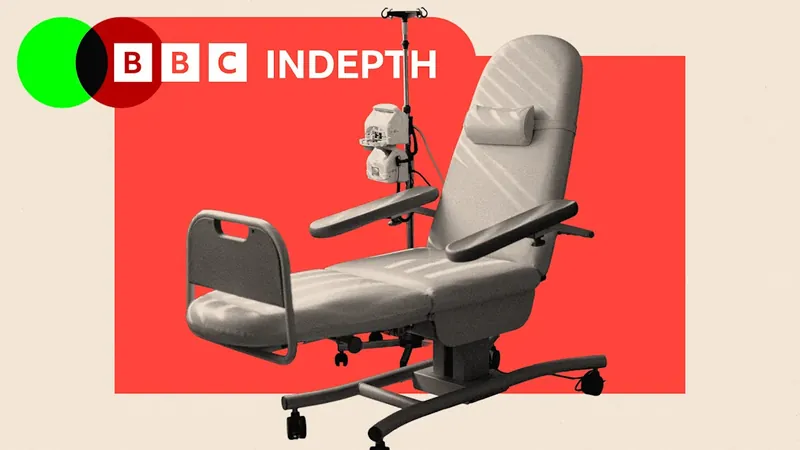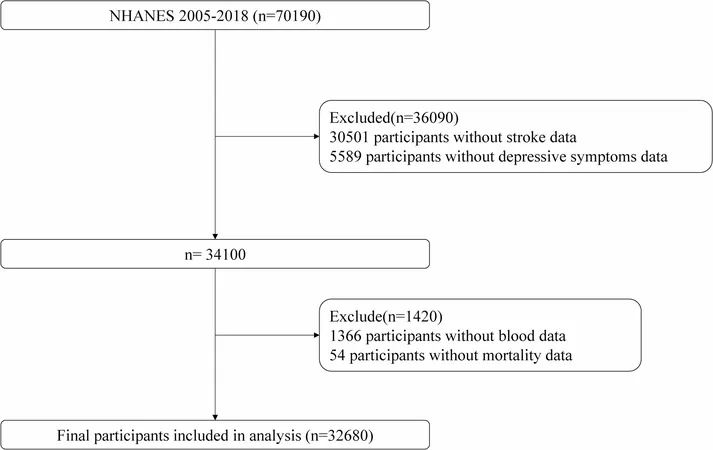
Secrets of Denmark's Cancer Success: What Can the NHS Learn?
2025-09-11
Author: Amelia
From Crisis to Triumph: Denmark's Cancer Transformation
Imagine a time when cancer patients were left waiting for critical treatment, even dying on waiting lists. Jesper Fisker, the head of the Danish Cancer Society, reflects on this grim reality from 25 years ago when Denmark's cancer care was in disarray.
Back then, Danish patients resorted to paying out of pocket for treatments abroad, hoping for better options in places like China and Germany. The survival rates were dismal, comparable to the UK's; both hovered around 48% for rectal cancer in the late 1990s. Meanwhile, countries like Australia boasted rates as high as 59%.
Dramatic Turnaround: Now a Model of Success
Fast forward to 2014, where Denmark's five-year survival rate for rectal cancer soared to 69%. Analysts suggest this positive trend has only continued, mirroring improvements in colon, stomach, and lung cancer statistics. The UK, despite its efforts, could only lift its rate to 62%.
A Bold Approach: Investment and Innovation in Healthcare
What’s behind this remarkable turnaround? Enter Herlev Hospital near Copenhagen, where vibrant artwork welcomes patients, creating a comforting and uplifting atmosphere. This commitment to patient experience is complemented by significant investments in cutting-edge medical equipment, including advanced CT scanners crucial for cancer diagnostics.
In 2008, Denmark's government channeled funds into acquiring these scanners, increasing their availability; now the country has about 30 scanners per million people, far surpassing the UK's meager 8.8 per million.
Swift Action: The Danish Cancer Strategy
But it’s not just the equipment—Denmark has also refined its approach to treatment delivery. Patients expect a cancer diagnosis within two weeks of referral, with treatment commencing shortly thereafter. If these timelines are not met, patients can transfer to another facility or even another country at the expense of the health system.
In England, the standard is much less ambitious, allowing for treatment to begin up to nine weeks after an urgent referral.
Holistic Care: Beyond Treating the Disease
Denmark’s approach doesn’t stop at medical treatment; it encompasses the overall patient experience. Counselling centres offer mental health support and companionship, significantly benefitting those undergoing treatment.
For instance, Elisabeth Ketelsen, an 82-year-old athlete diagnosed with breast cancer, praises the rapid and compassionate care she received, allowing her to return to competitive swimming soon after surgery.
Home Chemo: Redefining Cancer Treatment
Denmark also encourages at-home chemotherapy, giving patients more autonomy and comfort. This model has been endorsed by patients who appreciate the reduced risk of infections that in-hospital treatments can pose.
A Template for the NHS: Can the UK Follow Suit?
With the NHS facing similar challenges as Denmark, there’s an opportunity for improvement. UK Health Secretary Wes Streeting acknowledges the potential insights from Denmark’s system, emphasizing the need for quicker diagnoses and enhanced treatment access.
But adapting these strategies requires commitment—long-term planning, stronger accountability, and political consensus are essential to cultivate enduring improvements in cancer care.
The Road Ahead: Fighting for Better Cancer Care
Despite the challenges, experts agree that the UK can achieve similar success. If politicians prioritize cancer care as they did in Denmark two decades ago, and invest in necessary resources, it's possible to truly transform cancer outcomes in the NHS.
In the words of Jesper Fisker, sustained investment and a unified vision are the keys to a successful future—a sentiment echoed across the health communities of both nations.









 Brasil (PT)
Brasil (PT)
 Canada (EN)
Canada (EN)
 Chile (ES)
Chile (ES)
 Česko (CS)
Česko (CS)
 대한민국 (KO)
대한민국 (KO)
 España (ES)
España (ES)
 France (FR)
France (FR)
 Hong Kong (EN)
Hong Kong (EN)
 Italia (IT)
Italia (IT)
 日本 (JA)
日本 (JA)
 Magyarország (HU)
Magyarország (HU)
 Norge (NO)
Norge (NO)
 Polska (PL)
Polska (PL)
 Schweiz (DE)
Schweiz (DE)
 Singapore (EN)
Singapore (EN)
 Sverige (SV)
Sverige (SV)
 Suomi (FI)
Suomi (FI)
 Türkiye (TR)
Türkiye (TR)
 الإمارات العربية المتحدة (AR)
الإمارات العربية المتحدة (AR)